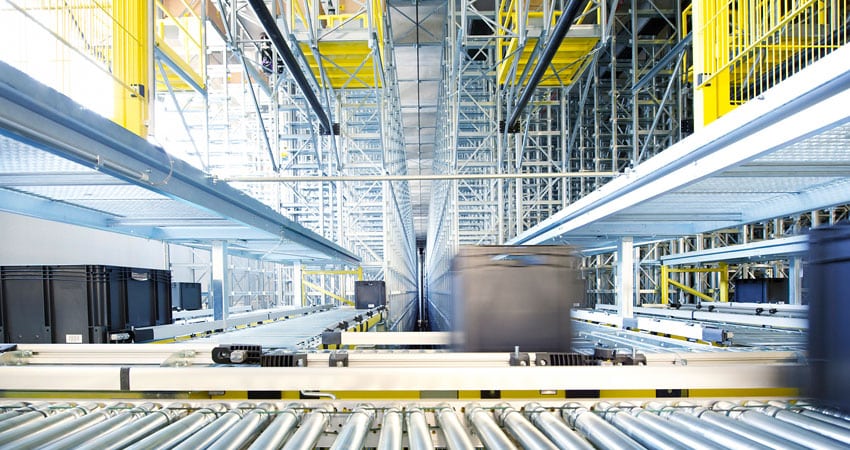Some companies spend huge amounts of money on new websites every couple of years, but their backend ecommerce operations are running the same as they were years ago using conventional, manual processes and systems.
With ecommerce’s small order size, companies need to be extremely efficient so that profits are not eroded by operational costs that don’t improve on a cost per order basis as volumes increase.
As we consult with omnichannel companies, they sometimes want to know how automation will benefit them, but they don’t have solid warehouse processes and systems as a foundation. A Warehouse Management System (WMS) and automation are not an “either/or” decision. There are dozens of benefits to WMS and automation when considered separately but to get the highest benefits, you need to consider the synergy of the two together.
WMS and Automation Synergy
This blog will illustrate the primary synergies and how to analyze and evaluate the readiness of your ecommerce operations. Here are seven categories of benefits:
Efficiency and cost reduction
Management, direct labor, indirect labor and benefits represent 60% to 80% of the cost per order, not including facility/occupancy and packing materials. Efficient automation will allow you to process more orders with less people and at a lower incremental cost. The design of the automation will reduce steps in the process and increase the work pace.
Automation can make multiple shifts more efficient, or it may reduce the number of hourly employees and supervision required to just one shift. Reduction in overtime and shift differential pay are possible.
From a human factors aspect, automation can lower the risk of injury and decrease repetitive activities that can lead to time off and workers compensation claims.
Automation is the delivery mechanism to lower costs, but a WMS with a labor management module will be required to plan, schedule, manage and measure productivity and control labor costs throughout your operations.
Optimizing Throughput
Planning an automation deployment means reconsidering all your ecommerce operations processes in order to streamline them. Automation will speed up order fulfillment and optimize both human and mechanical assets.
A WMS will give you visibility into the production line and processes for incoming product, put away, picking/packing/shipping and returns.
Accuracy
Conventional warehouses with minimal use of barcoding and automation may have an order accuracy rate of 98% or less. But deploying automation in concert with a WMS will achieve 99.99% accuracy. We’ve found that the average cost of an order error for our clients runs between $35 to $50, eating into profit; worse, it can mean losing an unhappy customer.
Customer service improvement
Reducing order cycle time with near perfect accuracy strengthens the customer relationship.
Control of warehouse inventories
Both WMS and automation require barcoded inventory throughout the process on all products and locations. Online and real-time processing will eliminate human errors in tracking warehouse inventory. Automation uses and provides data, but WMS provides the trackability.
Product storage and space savings
Automation and WMS both help better manage product locations. For instance, automation will allow you to optimize space required in the warehouse. Examples include automated sortation, box machines, overhead scanners, weigh-in-motion and robotic picking.
A WMS will improve inventory turnover, provide an inventory audit trail by product and location, optimize inventory levels and give you visibility throughout the supply chain.
Improved management planning and control
Visibility throughout warehouse processes and across the supply chain will be the hallmark of the WMS. It can provide historical analysis of inventory and processes and share data across supply chain partners. In an integrated and automated warehouse environment each movement is tracked and visible. In conventional warehouses assembling data for planning and analyses is largely manual and spreadsheet oriented.
Developing a Plan
Assessment: Create operational assessments across the supply chain from purchasing, receiving, tracking inventory, order fulfillment, returns, adjustments within the warehouse and planning and control of labor through each process. How can WMS and automation in tandem benefit each of these?
Phased technology implementation: What are the foundational technologies you must have in place in order to further deploy automation? One example is full implementation of barcode technology. Do you have solid information systems (WMS, ERP) as a foundation?
Develop a high-level schedule: Recognize that depending on where your company is in the WMS and automation curve, it is typically a multi-year process to implement.
Budget: Develop a high-level annual investment budget to implement.
ROI: Determine return based on tangible savings and itemize the intangibles to be gained.
Synergistically, WMS and automation will bring great benefits to your ecommerce operations but it’s a major project to plan and manage. Each company needs to assess how efficient they are today and project how they will remain operationally competitive in terms of cost per order and carton shipped as well as service levels met.
Brian Barry is President of F. Curtis Barry & Company

